Studio Visit
How Jan Wade’s Mixed-Media Works Tap Into Legacies of Spirituality and Craft
The African-Canadian artist's debut New York solo exhibition is on view at Richard Saltoun in New York right now.
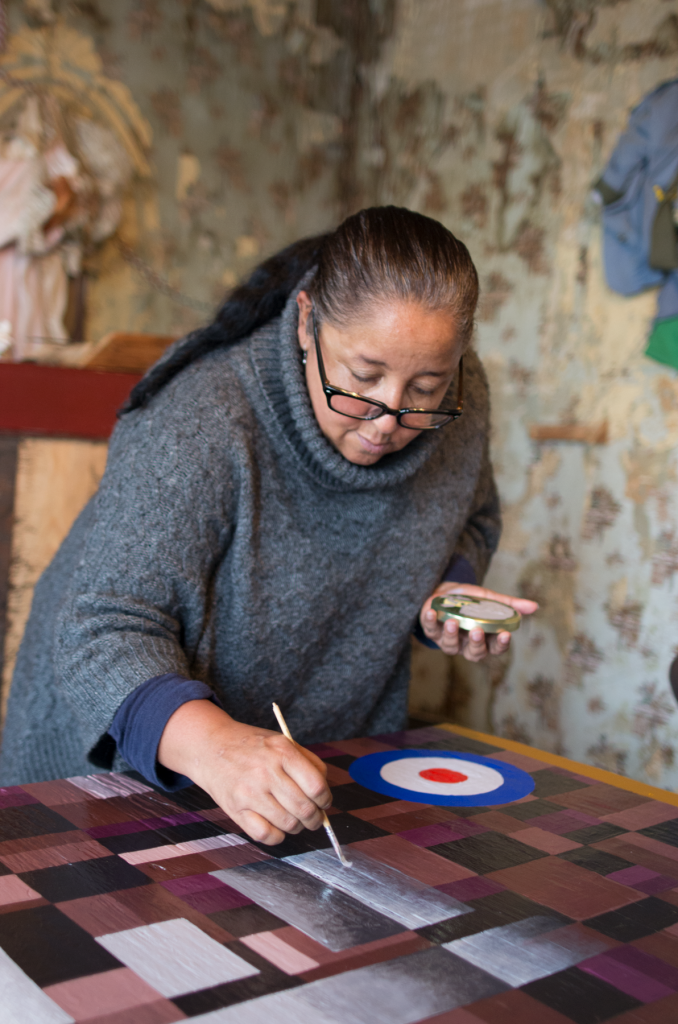
The African-Canadian artist's debut New York solo exhibition is on view at Richard Saltoun in New York right now.

Katie White

African-Canadian artist Jan Wade knows history is embedded in the smallest objects. Just ask her about her collection of buttons.
“I’ve collected buttons forever,” she said in a conversation in New York last month. “A button seems very simple, but it’s an invention that changed the world.”
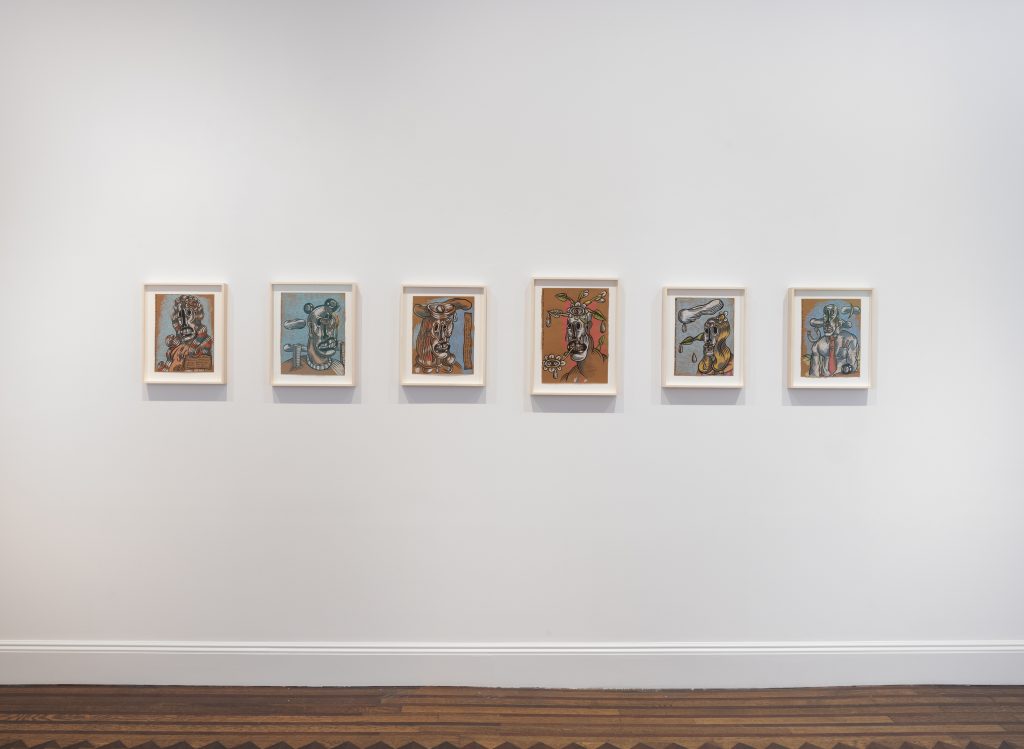
Installation view of Jan Wade: COLORED ENTRANCE. Photo by Adam Reich. Courtesy of Richard Saltoun Gallery London, Rome and New York © Jan Wade.
Buttons can be found adorning many of Wade’s artworks from across the decades, a symbol of frugality and ingenuity that traces back to her family’s Southern American roots. These are just one of a number of repurposed materials that can be found in Wade’s creations, and which bring physical resonance to the myriad Black histories at play in her works. These gestures are deeply personal. Wade was born in Hamilton, Ontario, in 1952, to a Black Canadian father, whose family had ancestral roots in the American South, and a Canadian mother of European descent. Her childhood was deeply shaped by her father’s mother and grandmother, who helped to raise Wade, as well as by the imagery and culture of her local African Methodist Episcopal Church (her father’s family came to Canada with the church).
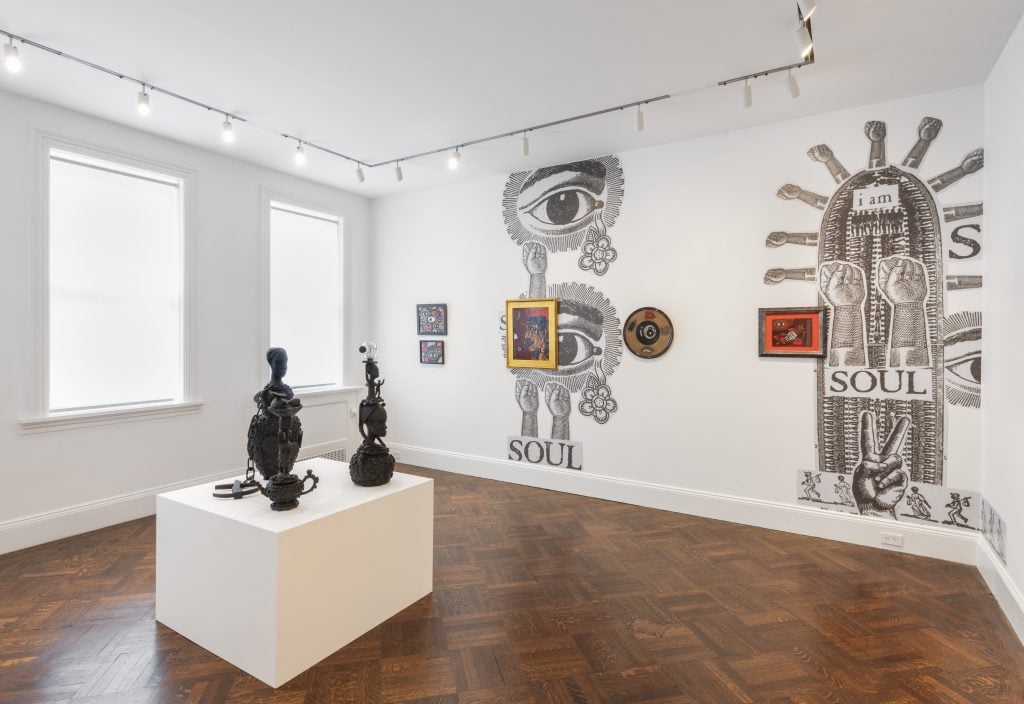
Installation view of Jan Wade: COLORED ENTRANCE. Photo by Adam Reich. Courtesy of Richard Saltoun Gallery London, Rome and New York © Jan Wade.
For more than 40 years, Wade has channeled these aesthetics and histories into paintings, textiles, sculptures, and multimedia works, rooted in a spirituality born of African diasporic practices.
Right now, Wade is the subject of her first New York solo show at Richard Saltoun Gallery. “Colored Entrance” brings together a survey of her works from the 1980s to today (on view through June 22). The exhibition is a follow-up to her to a presentation by Richard Saltoun at the 1-54 Contemporary African Art Fair in the U.K. and her retrospective Soul Power at the Vancouver Art Gallery, Canada in 2021. This retrospective will soon travel to the Hamilton Art Gallery in her hometown (June 27, 2024–January 5, 2025).
We recently caught up with Wade who shared insights into her enduring and expansive practice.

Jan Wade, Skullhead artists on the beach. Courtesy of Richard Saltoun Gallery London, Rome and New York © Jan Wade.
Can you tell me about the title “Colored Entrance”—a reference to the signs from the segregation era? This is the first solo show of your work in New York so I’m curious about what you’ve included. What’s important for viewers to know coming to this show to know about the history of Canada and how that shapes your work?
It’s not lost on me that I am the first Black female artist offered a solo show at the Vancouver Art Gallery in its hundred-year history. I always call Canada the home of polite racism.
Slavery existed in Canada for almost 200 years. The oldest Black community in Canada—Africville in Nova Scotia—was established hundreds of years old. For the title of my show, “Colored Entrance”—I specifically used the American spelling of colored. I was thinking of those signs particularly. We had that same history of racism in Canada, but we just didn’t have the signs.
But certainly, my grandmother took me on walks through town and said, “Don’t go in there. Stay outta there.” When my parents were first dating, there were parks they couldn’t go to and movie theaters they couldn’t go to together. That existed in Canada as much as it existed here in the U.S. You just don’t hear about that.
Here’s a fact that will knock your socks off: In 1948, when the Afrikaners toured the world looking for a perfect system of apartheid, they adapted our system of reservations and pass cards, but instead of reservations, they were called homelands. This is a history we’re still coming to terms with in Canada.
This show is almost a small survey of your works from across decades of your career. Can you tell me about some of the earliest works in the show?
Have you ever heard of the women’s rock festival Lilith Fair? I was an artist-in-residence for the four summers it was on the road. I would paint on old wooden plates and bowls that I found at the tour’s stops at thrift shops and I would keep them in my booth. The painting OK Lucky 8 Ball – Luck OK (1991) is one of those works, with an eight-ball at the center surrounded by symbols. That’s one of the oldest works in the show.
Even older than that is Skullhead artists at the beach (1988)—which Richard [Saltoun] recently found. We found it as we were preparing for the show. I’ve done a lot of work over the years. I haven’t seen this work probably since 1988 when it was painted. I live in Vancouver and the painting depicts Stanley Park and the artist beach, Third Beach. And I love it because it’s where the forest meets the ocean and where artists hang out.
What’s the symbolism of the 8-ball that reappears in a lot of your works?
At a certain point in time, an 8-ball described a weight of heroin. But it also references “being behind the 8-ball” as in being in an unlucky or bad position to be in.

Jan Wade, Breathe installation. Courtesy of Richard Saltoun Gallery London, Rome and New York © Jan Wade.
The show also includes a panel from the textile series “Breathe”—abstract embroideries that cues from the patterns of the women quilters of Gee’s Bend Alabama.
I wanted to do pieces of embroidery for a long time and was sort of interested in the old quilting traditions. I started making pieces and I wanted them to look like abstract paintings. It’s called “Breathe”—I had a dream one night about Eric Garner, who was killed for selling cigarettes. All he was saying was “I can’t breathe.” To me, that’s what Black people feel every day. You just want to breathe.
I know the installation was on view at the Vancouver Art Gallery recently, right? What was that like?
Yes, my favorite thing was I was sitting in the VAG in the room where “Breathe” was installed one day. Nobody knew who I was. These two older ladies came, and one of the ladies goes, “Oh, Mary, there’s a whole room full of paintings in here.” Then she walked up and she goes, “Oh, Mary! It’s sewing!”
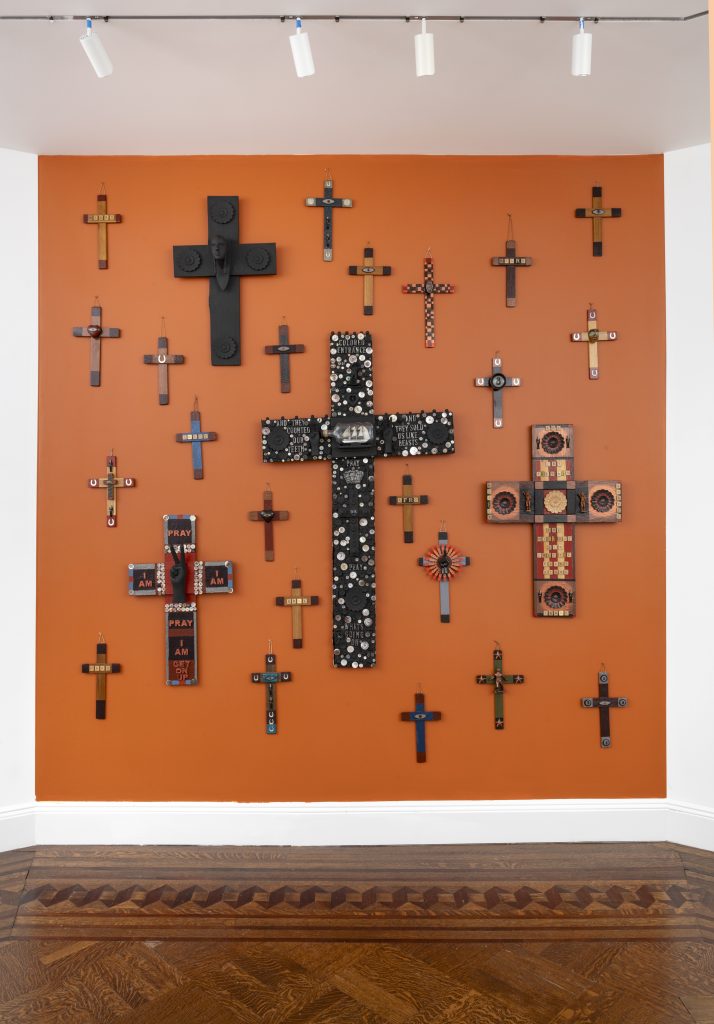
Jan Wade, Untitled (Epiphany). Courtesy of Richard Saltoun Gallery London, Rome and New York © Jan Wade.
The exhibition also includes a version of the installation “Epiphany” (1994–ongoing) which first debuted at the 1st Johannesburg Biennial in Africus in 1995. It features crosses made of found materials, and thrift store finds. Can you tell me about it? What keeps drawing you back to this symbol?
It’s a kind of questioning of spirituality and the history of spirituality. I should say, I grew up with an incredibly positive experience of Christianity in the Black church. They were all my family members. But, you get older and you start reading about the history of Christianity, especially pertaining to the slave trade. I’m fascinated by how enslaved African people brought their own spiritual practices to this part of the world and into Christianity. African spiritual practices were very present in my church—kissing the body of the deceased for instance.
So I developed this exploration of the cross and that spiritual practice. The cross is a universal symbol across many cultures, in indigenous cultures. It can be a symbol of man, of humanity. Some of the crosses in the installation are quite old and some are more recent. I keep thinking I’ve given up making them, but then I feel called to it.
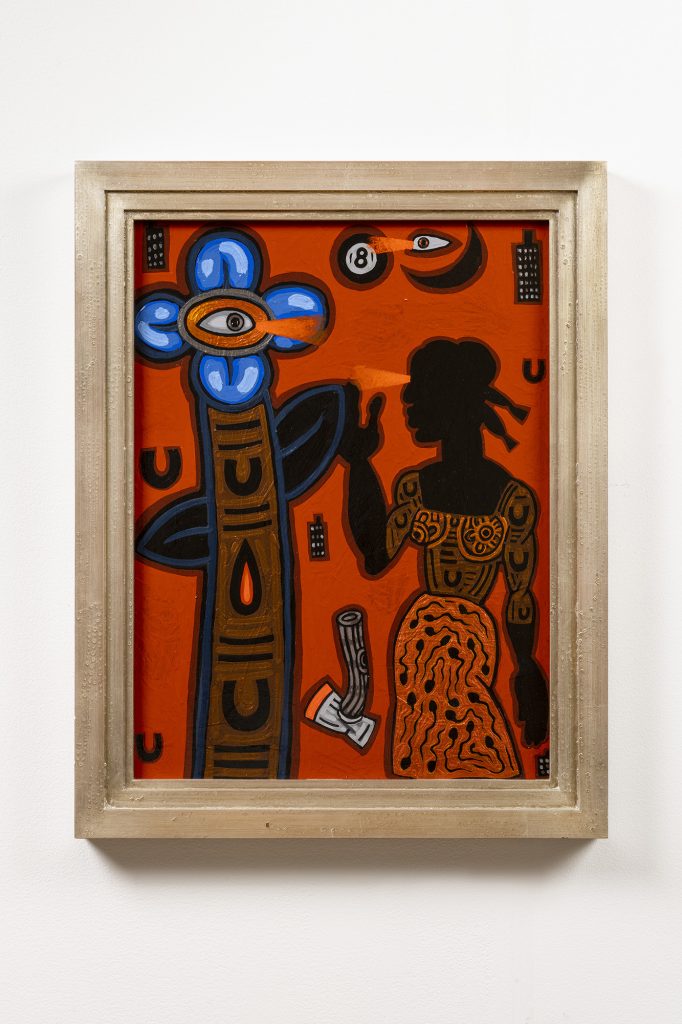
Jan Wade, Mama Story. Courtesy of Richard Saltoun Gallery London, Rome and New York © Jan Wade.
Your works almost always incorporate found or thrifted materials. Buttons, particularly—from your crosses to your most recent works, memory jugs. Can you tell me about this?
My grandmother and my great-grandmother were Black ladies from the Southern U.S. In black communities, nothing goes to waste. Growing up, I became fascinated by my grandmother’s button collection. I’ve always been totally fascinated by anything that was around that you could use to be creative. I started putting shell buttons on my memory jug works. Shells are this memorial to the sea journey of the Middle Passage. On old slave graveyards, they would leave shells on graves. Sometimes I look at these old shell buttons and you realize that somebody made them by hand—the reminders of these gestures of hand areimportant to me.
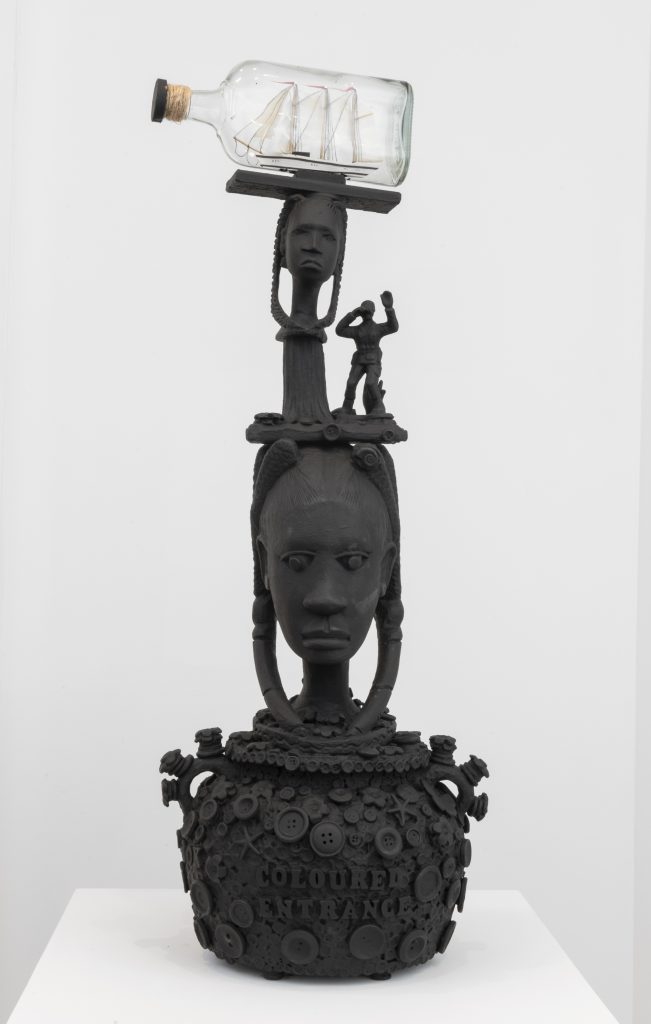
Jan Wade, Wood Hand. Courtesy of Richard Saltoun Gallery London, Rome and New York © Jan Wade.